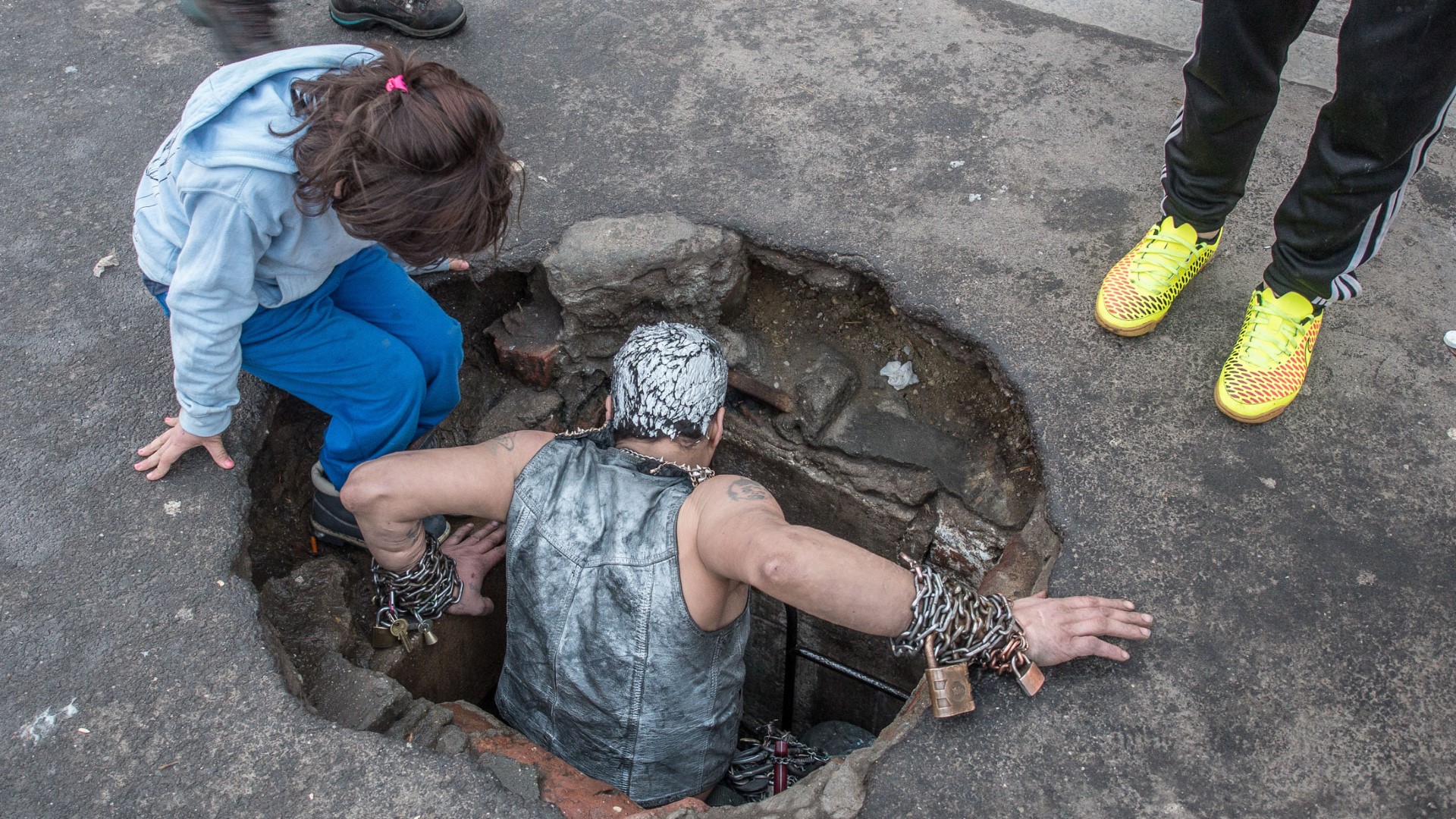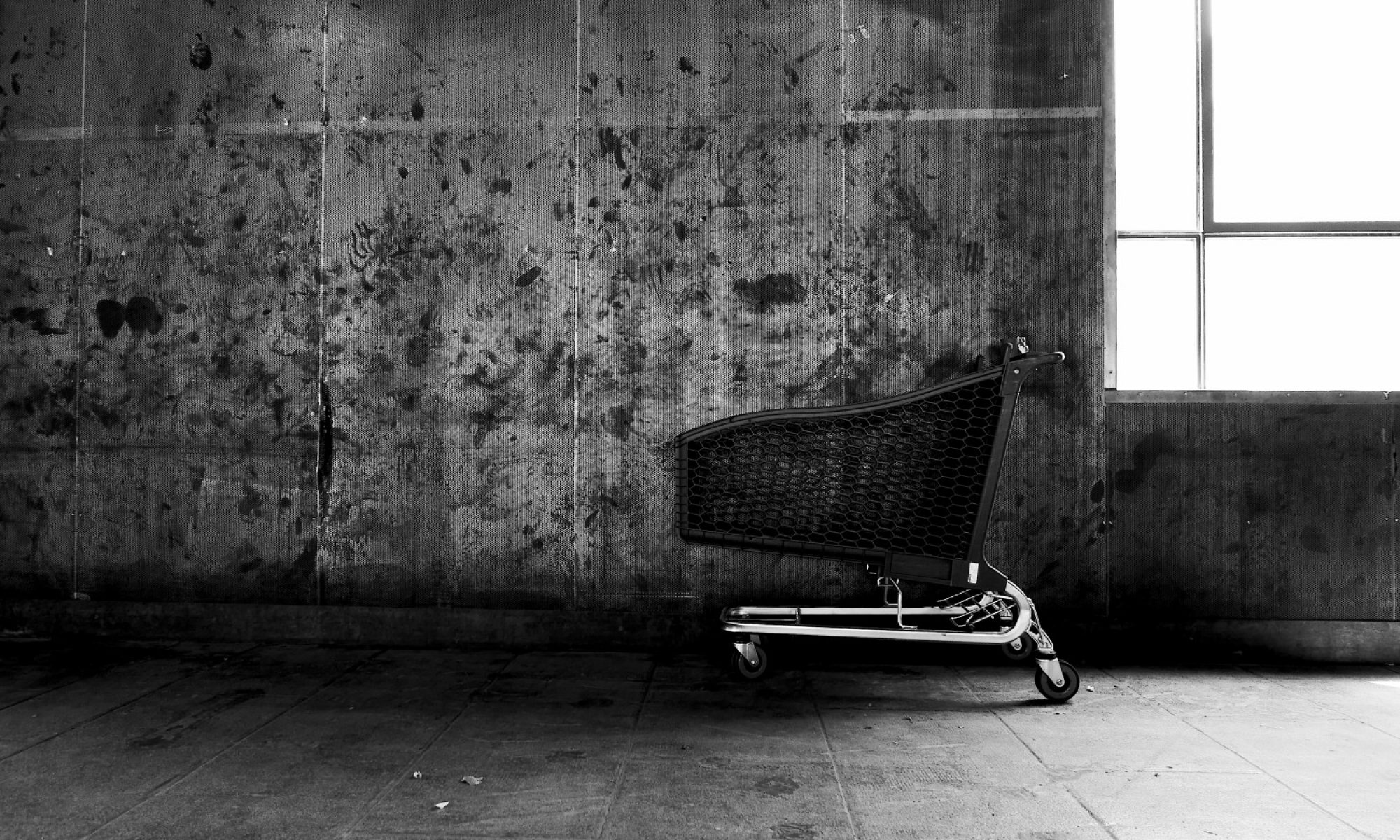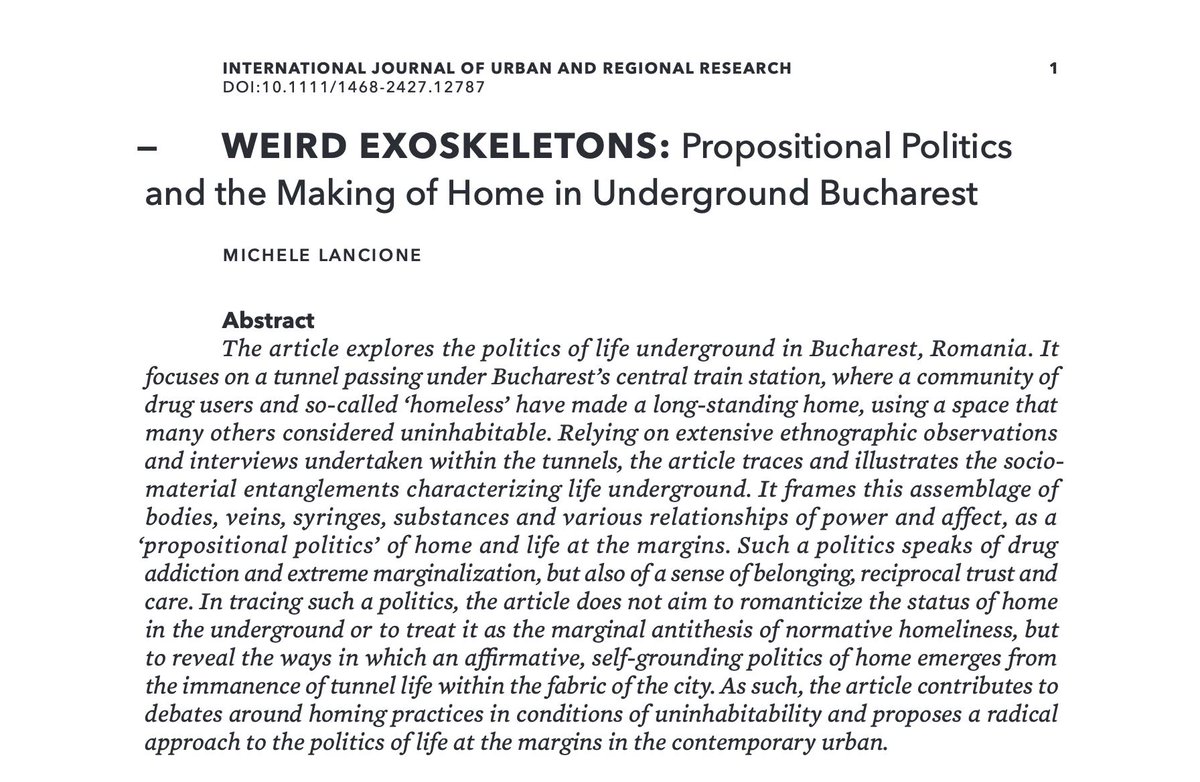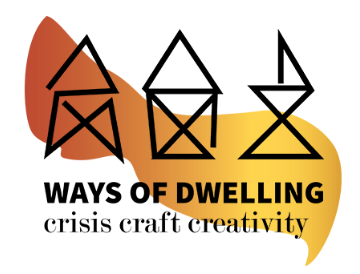The Urban Human and the Life at the Margins research themes at the Urban Institute are launching a series of internal workshop on ‘The Urban Human: Conundrum and Interstices’. The series is aimed at scholars within the University of Sheffield interested in exploring a number of concerns on urbanity, affects and race.
Facilitators: AbdouMaliq Simone and Michele Lancione
The program includes five meetings:
-
- Urban Lexicons, 19/2/19, 12-2pm, ICOSS boardroom
- The Ambivalent Generativity of Blackness, 19/3/19, 12-2pm, ICOSS boardroom,
- Urban Affect, 23/4/19, 12-2pm, ICOSS boardroom
- The (A)Climatic Human, 21/5/19, 12-2pm, ICOSS boardroom
- The Propositional Politics of Wasted Lives, 18/6/19, 12-2pm, ICOSS boardroom
To subscribe, please complete the following form: https://goo.gl/forms/ipIGt5ur6HwO91eF3
Precis
Urbanization and humanity as geological force have purportedly attained planetary dimensions, and in this totalizing subsumption of the planet to a narrow band of powers, poses the possibility of extinction. Whereas urban and human could reiterate the other, their present complicity threatens to cancel the other’s existence. Urban life now demonstrates the capacity to make use of anything: to fold the death of bodies into calculable assets, to manage its perennial deviancies through the myth of crisis and emergency, to govern life not as the cultivation of aggregate populations but through multiplying the number of dimensions possibile in the confines of individual distributions – where a single body operates as the scenegraphy of infinite intersections, and to the rendering of flebile desire for life in the calculus of financialised assets.
In the uban human nothing seems to remain of a species in common. For, even the supposed commonality of the ‘human’ was predicated on those dispossed of any eligibility for being human. It is within the reproduction of deviancy through defining apparatuses scattered across the urban field – being those of bureaucratic, intellectual, charitable and arithmetic nature – that the other is maintain as the fundament of the good common life. The black body, the home-less body, are the ground upon which the the storytelling of the urban human is maintained. Just as urbanization is an ongoing story – of articulation, density, contiguity, and absence – it is the concrete underpinning, the infrastructure of this particular storytelling that is the “nature” of being (urban) human.
So to what extent is cancelling of the urban and the human both catastrophe and liberation? If the urban operates with the capacity to make valuable the intensive particularization of things on the basis of its undeserving bodies, how might it operate as a field of experimental gatherings and provisional sutures? What if the answer does not rely upon a compromised politics of rights and humanitarianism, but instead requires the sabotage of the coherence of a specific subject/object? What if the human was approached as a polyrhythmic constellation of simultaneous stories not judged according to any criteria, but constantly crisscrossing bodies, technics, machines, landscapes and disciplines?
Workshop One
Urban Lexicons
What does it mean to look at the urban human from the problem of how subjectivities are (re)produced in an entanglement of post-human affect? Urban theory is moving beyond the remit of its disciplinary safegrounds. A new grammar to explore forces and rhythms is emerging, which can help us navigate the uncertain terrain of the urban human.
- Ash Amin (2015) Animated space. Public Culture 27.2, 239–258
- De Boeck, F. (2015) “Divining” the city: rhythm, amalgamation and knotting as forms of “urbanity”. Social Dynamics 41.1, 47–58.
- Morten Nielsen (2014) A Wedge of Time. Futures in the Present and Presents without Futures in Maputo Mozambique. Journal of the Royal Anthropological Institute 20, 166–182
- Stengers, I. (2005) The Cosmopolitical Proposal. In Latour, B. and P. Weibel (eds.),
Making Things Public: Atmospheres of Democracy. MIT Press, Cambridge, MA.
Workshop Two
The Ambivalent Generativity of Blackness
If blackness is simultaneously at the margins of human life – that which is depended upon in order to consolidate the human as a particular privileged set of bodies and capacities- – and the platform through which a new genre of human life is imaginable, what is to be made of blackness as a force of urbanization?
- Fred Moten (2013) The Subprime and the beautiful, African Identities, 11:2, 237-245
- Saidiya Hartman (2018) The Anarchy of Colored Girls Assembled in a Riotous Manner. South Atlantic Quarterly, 117 (3): 465–490
- Paul Gilroy (2018) “Where every breeze speaks of courage and liberty”: Offshore Humanism and Marine Xenology, or, Racism and the Problem of Critique at Sea Level. Antipode 50: 3-22
Workshop Three
Urban Affect
In the media saturated worlds of the urban, where the digital, parametric, and algorithmic become the predominant realities through which to understand how human life is articulated to “its” worlds, and where relationalities exceed the capacity of human cognition to register them, what does it mean to “feel” the urban? What role does affect and sensibility play in such an environment?
- Brian Massumi (2017) Collective Expression. In The Principle of Unrest. Open Humanities Press.
- Patricia Clough (2018) The User Unconscious: On Affect, Media, and Measure. University of Minnesota Press
- Kathleen Stewart (2007) Ordinary Affects. Duke University Press, Durham, NC.
Workshop Four
The (A)Climatic Human
If the “promises” of urbanization as an assemblage of judicious intersections amongst all things is betrayed by the constitution of the “human” as a geological force and the intensive fragmentation/particularization of human life through spatial segregation–what remains?, what is the human “in-between” these disjointed positions?
- Tom Cohen and Claire Colebrook (2017) Vortices: On “Critical Climate Change” as a Project. South Atlantic Quarterly 116 (1): 129-143.
- Arturo Escobar (2016) Thinking/Feeling with the Earth: Territorial Struggles and the Ontological Dimension of the Epistemologies of the South. Revista de Antropología Iberoamericana 11: 11-32.
- Elizabeth Povinelli (2015) The Rhetorics of Recognition in Geontopower. Philosophy & Rhetoric 48:4, 428-442.
Workshop Five
The Propositional Politics of Wasted Lives
In contemporary urban conditions, what does it mean to point to wasted life or dispossession? Within the urban, is anything really wasted, and what or whose judgment can ever determine this? And what kind of urban political emerges when one engages with the interstices of wasted lives?
- Judith Butler (2011) Bodies in Alliance and the Politics of the Street. Transversal 1–15.
- Didier Fassin (2012) Humanitarian Reason: A Moral History of the Present. University of California Press, Part One.
- Neferti X.M. Tadiar (2013) Life-times of disposability within global neoliberalism. Social Text 31:19–48.
- Ursula K. LeGuin (1974) The Dispossessed, Gateway
- Sandro Mezzadra and Bred Neilson (2013) Border as Method, or, the Multiplication of Labor. Duke University Press, Durham, NC





